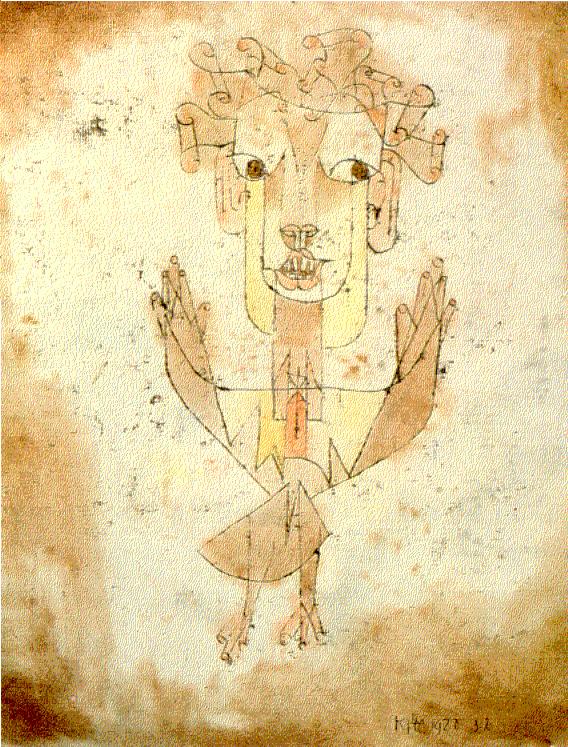Voice of the Lord upon the waters...
Although he doesn't refer to the Johannine story of the wine miracle at Cana (Gospel of John 2.1-11), Souren Melikian poses an intriguing question in his art column of Friday, April 28, 2006, "Road to Byzantium is paved with a passion for antiquity," for the International Herald Tribune.
But we can get to the question in a moment. First, let's allow Melikian to introduce his topic:
Transition periods that bridge the abyss from one culture to another hold a special fascination to our society. None was so protracted nor so complex as the interval that separated the end of antiquity from the new world molded by Christianity that emerged in the Near East, and then Europe .... Glimpses into these trends can be caught through a disparate assemblage of objets d'art mainly from the State Hermitage Museum in St. Petersburg on view at the Courtauld Institute until Sept. 6 .... One of the most mysterious objects in the show indicates that heirlooms from antiquity were integrated into the Christian ritual. The bronze statue of Dionysus, which dates from the second century A.D., was recovered near the river Don. The text of Psalms 28:3 (29:3 of the Revised Standard Version) is engraved in Greek capitals around the waist.Melikian provides neither the Greek original (28.3) of the psalm verse nor the English translation (29.3), so let me do so here:
φωνη κυρίου επι των υδάτων,Note that the only diacritical marks that successfully pasted here are the smooth breathing marks, so the important rough breathing mark (the "h" sound) that belongs above the "υ" of "υδάτων" and the "ο" of "ο θεος" is missing. Anyway, we now hone in on Melikian's question:
Voice of the Lord upon the waters,
ο θεος της δόξης εβρόντησεν,
the God of the glory thundered,
κύριος επι υδάτων πολλων.
the Lord upon waters many.
Zalesskaia reminds us that the passage is read during the consecration of water at the Feast of the Ephiphany. Two crosses engraved on the chest end with letters that form the traditional invocation "Lord, help me." The statuette could have been used to pour water for liturgical purposes. What underlying metaphorical meaning might have been given to Dionysus in that context eludes us.Melikian's question is implicit, but let's spell it out: Why does this "mysterious second-century bronze statuette of Dionysus," of obviously pagan origin, have "[t]wo crosses engraved on the chest ... with letters that form the traditional invocation Lord, help me" and "the text of Psalms 28:3 engraved in Greek capitals around the waist"?
I wish that I could offer the image here for your inspection, but it's not online. It does appear in my hardcopy of Melikian's article, the Seoul-based edition of the IHT for Saturday-Sunday, April 29-30, and I assume that the same holds for the hardcopy of the Paris-based edition for Friday, April 28. Below the image in my hardcopy is this caption:
A mysterious second-century bronze statuette of Dionysus, with the text of Psalms 28:3 engraved in Greek capitals around the waist.No dimensions are given, but since Melikian refers to it as a "statuette" and remarks that it might "have been used to pour water for liturgical purposes," then it must be small enough to hold in one's hands while pouring water ... or wine? After all, this is Dionysus.
Isn't it?
Or is it Jesus?
I'm not suggesting that the statuette is falsely identified. It is Dionysus. But perhaps it's Dionysus 'rechristened' as Jesus in much the same way that an aggressive Teutonic warrior becomes the Christ who charges into battle in mounting the cross for his own crucifixion in The Dream of the Rood.
On portrayals of Jesus as Dionysus in late antiquity, let me cite footnote 66 in an online paper of mine, "Gift-Giving Across the Sacred-Profane Divide: A Maussian Analysis of Heavenly Versus Earthly Food in Gnosticism and John's Gospel," which I presented in Boston at the AAR/SBL annual meeting in 1999:
Some scholars have seen a Dionysian influence on the portrayal of the Cana wine miracle in John 2:1–11: cf., e.g., Rudolf Bultmann, Das Evangelium des Johannes (Göttingen: Vandenhoek & Ruprecht: 1950); Martin Hengel, "The Interpretation of the Wine Miracle at Cana: John 2:1–11", The Glory of Christ in the New Testament, edited by L. D. Hurst and N. T. Wright (Oxford, Clarendon: 1987), pp. 84–112; and Edmund Little, Echoes of the Old Testament in the Wine at Cana in Galilee (John 2:1–11) and The Multiplication of the Loaves and Fish (John 6:1–15): Towards an Appreciation (Paris: J. Gabalda et Cie Éditeurs: 1998). If there is a Dionysian influence upon the Cana wine miracle, then understanding Jesus as offering himself through the miraculous wine is a reasonable deduction, for Dionysius entered into his devotees in the wine that they drank ritually in his cult. Cf. Lewis Hyde, The Gift: Imagination and the Erotic Life of Property (New York, Vintage Books: 1983), both on the importance of wine as a symbol of eternal life and on its significance in the Dionysian myth. Hyde holds that in the myth of Dionysos, wine is a symbol of zoe, "the life that endures" (cf. John 6:27) (rather than bios, "limited life"), and that drinking the ritual wine enacts "the sacrament of reconstituting the god" (pp. 32–33). Cf. also Maguelonne Toussaint-Samat, A History of Food (Cambridge, Blackwell Publishers: 1992), who argues that ritual intoxication was often regarded by the ancient world "as an act of religion in the literal sense…, creating a bond between man and God…. The Greek term for ritual intoxication was enthousisamos, divine possession". Toussaint-Samat then adds: "The veneration of Dionysus went hand in hand with a slyly indulgent attitude" towards intoxication (p. 253). Similarly, Jesus provided the guests at Cana with enormous quantities of wine -- even after they had already drunk a great deal! -- which thus implies that intoxication was no troubling issue here, thereby further suggesting a Dionysian connection. If the wine at Cana was sacramental, then the Johannine Jesus's eucharistic reference in 6:53–56 to his blood as true drink surely refers back to the miraculous wine -- the blood and the wine therefore both being symbols of the eternal life offered. On the general link between blood and wine as symbols of life, Toussaint-Samat notes: "[Wine's] usual red colour suggests an association with blood; it is regarded as the blood of the vine. Like blood, it is a symbol of life…. Eternal life is the prerogative of the immortal gods; drinking wine makes man temporarily their equal" (p. 258). The Johannine Jesus, however, goes beyond this offering a drink of genuine immortality.If you read this quote closely (and I wouldn't blame you if you didn't), then you'd see that the question arises as to how early the image of Jesus takes on aspects of Dionysus. Some scholars, even conservative ones like Martin Hengel, see this already in the Gospel of John, which is usually dated to about 90 to 100 A.D.
Sometimes, as in John's Gospel, any allusion to Dionysus is made with the intention of presenting Jesus as superior. But the statuette that Melikian refers to might serve to identify the two in a sort of pagan-Christian synthesis in which Jesus and Dionysus are understood as two different names for the same deity.
Barring further information, my suggestion can only be a speculative one, but assimilating two similar deities from two different religious traditions occurred rather often in antiquity, so we have to consider that it might have happened with this Dionysian statuette.




















